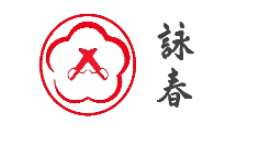Here’s a short video showing the reaction on my body I “hit” Dave (in slow motion) . This is being slowed down to demonstrate the reactive forces of a punch, even though it’s really a push in this example.
By softening the body and releasing the need to tense up, you can absorb greater force through the body and release force more easily when attacking.
Your soft connection with the ground gives you the ability to absorb force without the need to retreat or deflect, and this allows you to generate more force from very little movement.
(In this video I’m using the idea of a plumb line connected from the tip of the crown of your head to the weight which hangs from a plumb line down the cernter of the body.
At the end of the line is a weight. Your posture determines where this weight hangs. A small shift in your head position means the weight moves from between your heels to between your toes.
Depending where you place this weight, your partner/opponent will feel the weight of your mass more or less heavily through the contact point.
If the pendulum is placed towards the heels, it become easier to push your partner backwards.
Conversely, if you place your mass more towards your toes, your mass moves forwards, making a push backwards more difficult for your partner, (but a pull forwards more efficient).
Here’s a short overview of Wing Chun. The kicks are low, since high kicks are considered an overcommitment, especially at close range. You would also be very vulnerable on one leg.
In the “game” of chi sau, partners link arms using three basic positions; bong sau, fok sau and tan sau. From there they learn how to defend the centreline using the force necessary to control their partner while attempting to break through their partner’s defence simultanteously.
This can allow you to learn how to defend and attack at the same time while using your body positioning to evade or absorb an attack.
Pak sau (slapping hand) is a simple drill which enables you to remove a blocked hand and strike through very quickly. Pak sau exercise gives you multiple opportunities to learn this technique and any follow up movements which might be appropriate given your opponents responses.
Pak sau drill with follow up (lap and palm). This follow up is chosen when your partner jams your initial technique and leaves tension in their arm. This makes it perfect for a follow up pulling technique (lap sau).
Also in this video a quick explaination of centreline theory.
